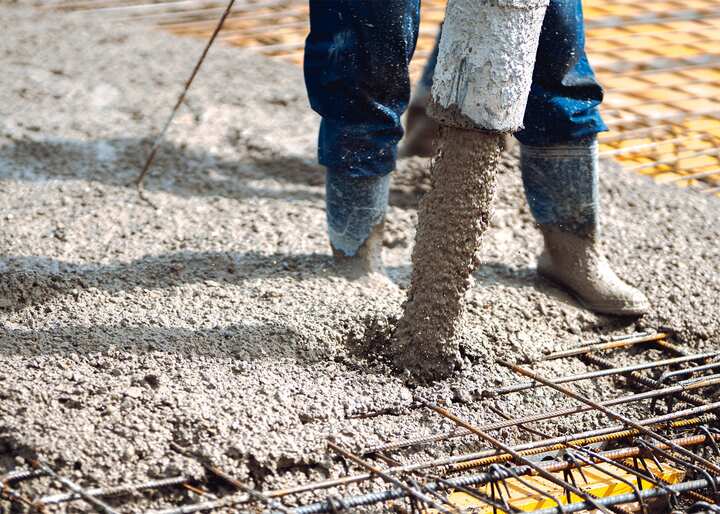
Why concrete is reinforced with steel?
Concrete is a widely used construction material that is known for its versatility, durability, and affordability. However, concrete has its limitations when it comes to strength, particularly under tensile forces.
To overcome this challenge, engineers have developed a technique of reinforcing concrete with steel, which has become a standard practice in modern construction. The combination of concrete and steel reinforcement, known as reinforced concrete, has revolutionized the construction industry by allowing for the construction of taller and more complex structures.
In this article, we will explore the reasons why concrete is reinforced with steel, the advantages of using steel reinforcement, how it works, and the various applications of this technique. We will also discuss the future developments in concrete reinforcement, which are likely to lead to further advancements in the field of construction.
The Importance of Strength and Durability in Construction
The construction industry places a high value on materials that exhibit exceptional strength and durability for long-lasting structures. This is where reinforced concrete comes in.
Concrete is an affordable and versatile building material that can be molded into different shapes and sizes. However, it has a low tensile strength, which means it is prone to cracking and breaking under pressure.
To overcome this limitation, steel reinforcement is added to the concrete. Steel has a high tensile strength and is flexible, making it the perfect material to reinforce concrete.
The combination of concrete and steel creates a composite material that is stronger and more durable than either material alone, making it ideal for building structures that can withstand the test of time.
The use of reinforced concrete has become a standard practice in the construction industry, ensuring that buildings, bridges, and other structures are safe and resilient.
The Advantages of Using Steel Reinforcement
The incorporation of an additional material in the formation of concrete structures offers numerous benefits, including increased tensile strength and ductility, which in turn improves the overall durability and stability of the structure.
Steel reinforcement is widely used in the construction industry due to its numerous advantages. Steel has a high tensile strength, which is necessary to withstand the forces that act upon a structure over time. Additionally, steel has a high ductility, which means it can bend without breaking, which is essential in a structure that is subject to seismic activity or other external forces.
Steel reinforcement is also cost-effective and readily available, making it a popular choice for construction projects. The use of steel reinforcement ensures that the concrete structure is strong and durable, providing a sense of security and longevity for those who occupy the space.
How Steel Reinforcement Works
Incorporating an additional material with high tensile strength and ductility in construction projects improves the overall durability and stability of the structure, evidenced by the fact that steel reinforcement is used in over 95% of all reinforced concrete structures worldwide.
Steel reinforcement is used in concrete to provide tensile strength that is otherwise lacking in the material.
The steel bars, rods, or mesh are placed in the concrete before it is poured and then set in place once the concrete has hardened.
When stress is applied to the structure, the steel reinforcement absorbs the tension, preventing the concrete from cracking or breaking.
Steel reinforcement works by distributing the load across a wider area, improving the overall strength and durability of the structure.
Additionally, steel reinforcement can be customized to fit the specific shape and size of the structure, making it a versatile and adaptable material.
By using steel reinforcement in concrete, builders can construct structures that are strong, durable, and resistant to wear and tear, ensuring the safety and longevity of the building.
Applications of Steel-Reinforced Concrete
Steel reinforcement is widely used in construction projects to enhance the strength and stability of structures, and its versatile nature makes it an essential material for creating durable and resilient buildings.
Steel-reinforced concrete finds applications in a variety of structures such as bridges, tunnels, high-rise buildings, dams, and industrial buildings.
In high-rise buildings, steel reinforcement is used in the columns, beams, and slabs to bear the weight of the structure and withstand the forces of wind and earthquakes.
In bridges and tunnels, steel reinforcement is used to maintain the integrity of the structure, resist the loads of traffic, and protect against corrosion.
In dams and retaining walls, steel reinforcement is used to resist the pressure of water and soil, preventing cracks and leaks that can lead to catastrophic failure.
The versatility of steel reinforcement in concrete allows for the creation of structures with complex shapes and designs, making it an ideal material for architects and engineers to push the boundaries of what is possible in construction.
Future Developments in Concrete Reinforcement
Advancements in construction technology are paving the way for new materials that can enhance the durability and sustainability of structures, much like how the invention of the wheel revolutionized transportation.
In the field of concrete reinforcement, researchers are exploring the use of alternative materials, such as glass fibers, carbon fibers, and nanomaterials, to improve the strength and durability of concrete.
These materials offer several benefits over traditional steel reinforcement, including greater resistance to corrosion, reduced weight, and increased tensile strength.
Additionally, researchers are investigating new methods for reinforcing concrete, such as self-healing concrete, which uses bacteria to repair cracks, and 3D-printed concrete, which allows for more intricate and customizable reinforcement designs.
While these innovations are still in the early stages of development, they have the potential to transform the field of concrete reinforcement and improve the longevity and sustainability of our built environment.
Get local quotes for all your Concrete needs
Looking for professional concrete contractors in Durham, North Carolina? Reach out to us today to compare quotes from local experts!